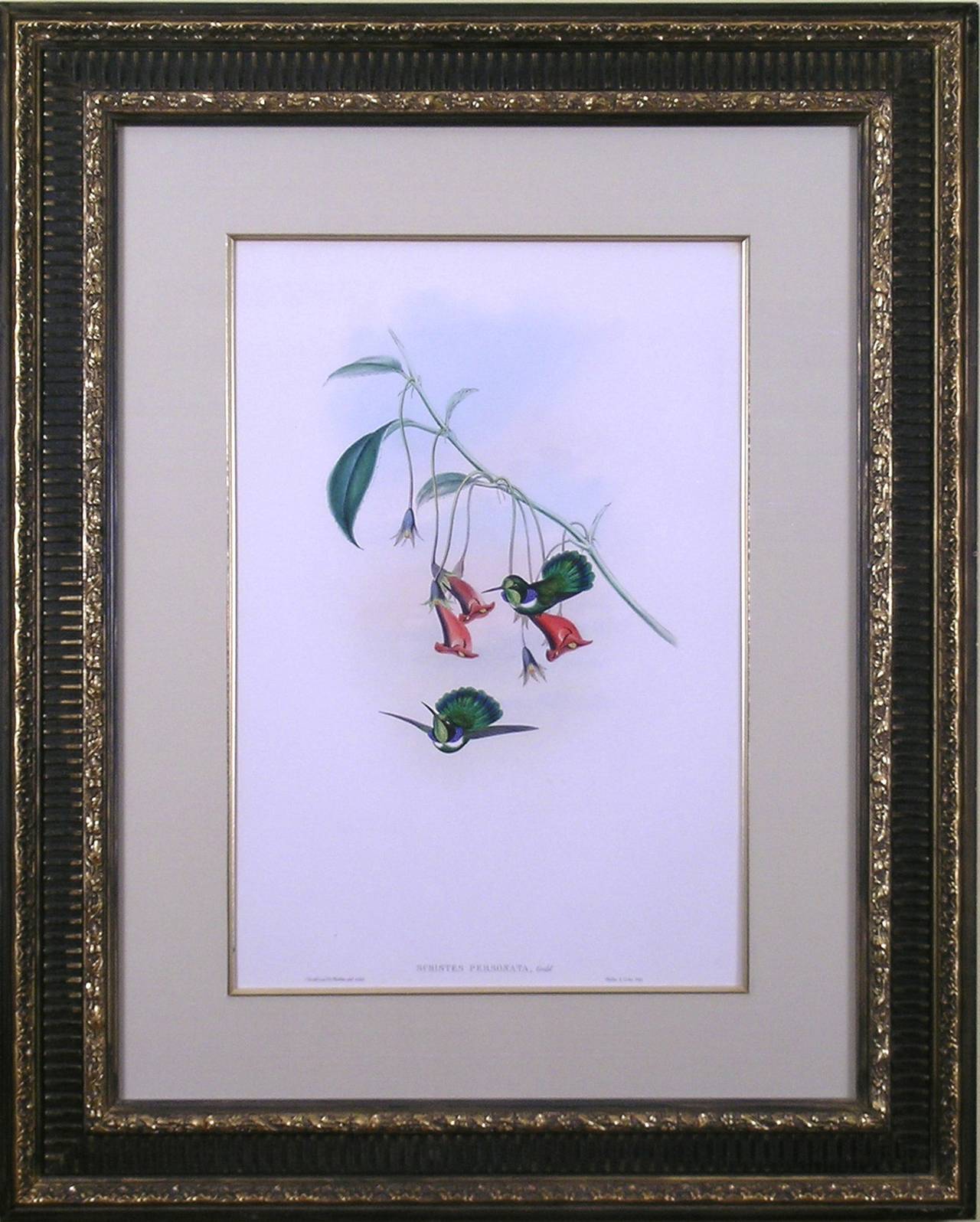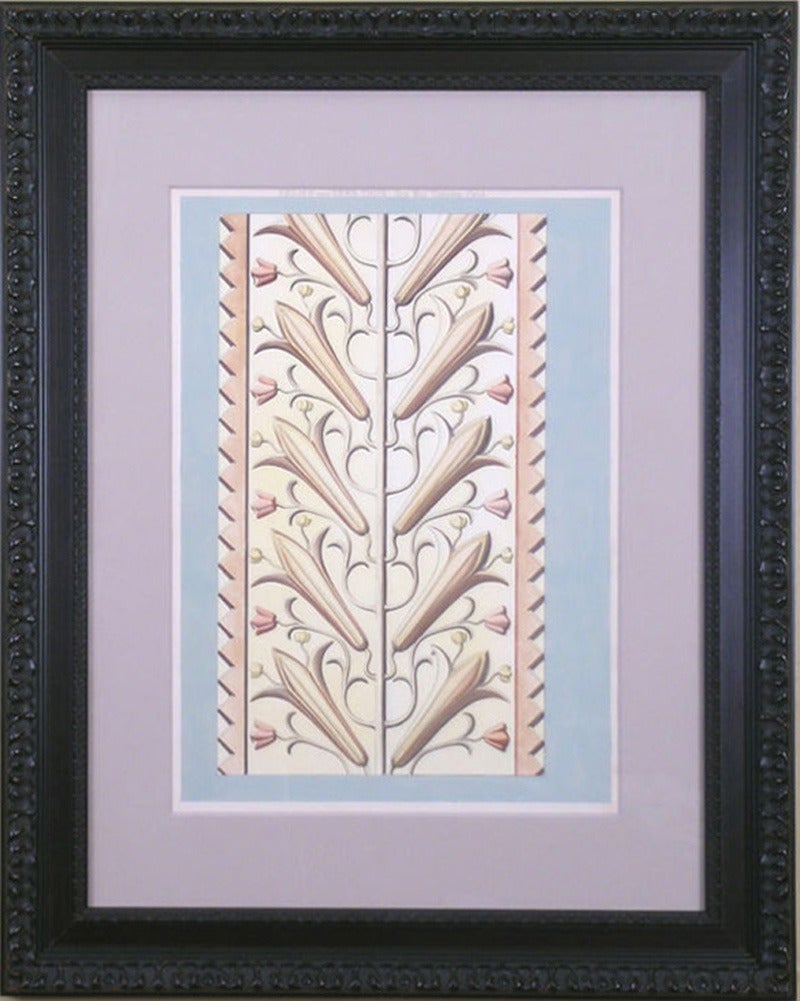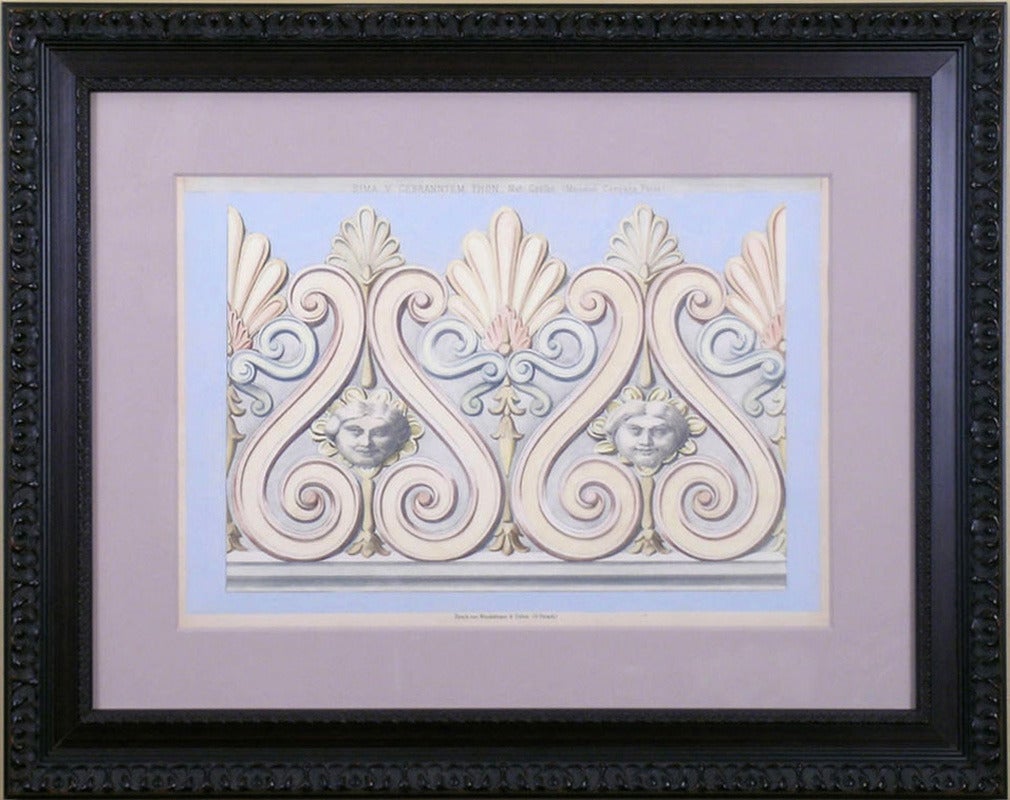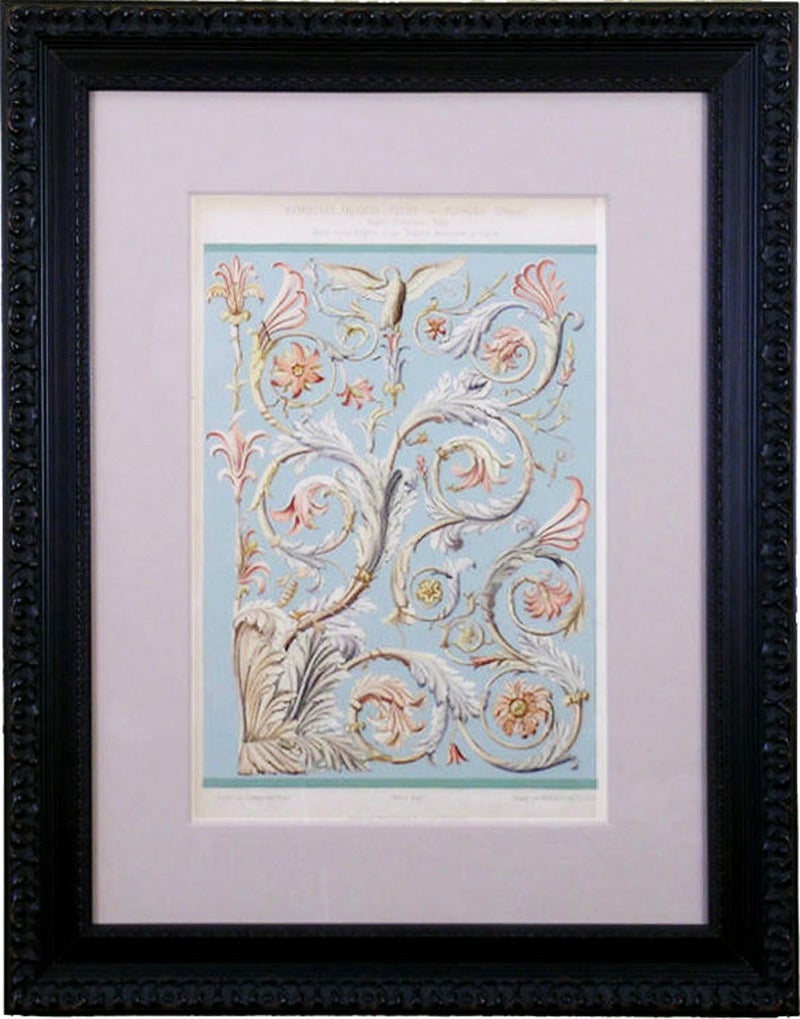Want more images or videos?
Request additional images or videos from the seller
1 of 7
John James AudubonRocky Mountain Neotoma. (Pack Rat)1854
1854
About the Item
JOHN JAMES AUDUBON
John Bachman
The Viviparous Quadrupeds of North America
Published by V.G. Audubon
Lithograph with Original Hand-Coloring
New York 1854. Royal Octavo Edition
The Viviparous Quadrupeds of North America is the most outstanding work on American animals produced in the 19th Century. Audubon started to gather material for this second great undertaking in the 1830s, as Robert Havell was finishing the last plates for the Birds of America. John Bachman, a Lutheran minister, who had been the artist’s closest friend and supporter for many years, wrote all of the scientific descriptions and acted as a scientific editor for the work. Audubon’s two sons, John Wodehouse and Victor, also took critical roles. They contributed a great deal to the Birds of America, because of their father’s failing health and eyesight. Their help was even more important to the Quadrupeds. John Woodhouse, using a style modeled on his father’s, was primarily responsible for the plates produced after 1846. The small quadrupeds were published in octavo form just as the birds, but for the first time, the name of Audubon's son, John Woodhouse Audubon, appeared on the plates. J.T. Bowen was the lithographer. A number of artists, chiefly William E. Hitchcock and R. Trembly, transferred the images to the stones, signing their names on the plates. The Quadrupeds, as Audubon envisioned the book, would complete his record of the animal life of North America. Father and sons started their travels in Eastern woodlands and went through Missouri to the Rock Mountains. They also collected specimens along the Mississippi as well as in the coastal regions in Florida and the East Coast.
About 2000 copies of the first edition were sold. Other editions followed, the last in 1870. These 3-volume sets, as with the seven volumes of birds, were used as gifts to foreign governments by the U.S. government. The plates measure about 7x10 inches and are stone lithographs colored by hand. Audubon died in 1851, before this work was completed. The Quadrupeds have never received the widespread public acclaim which had greeted and sustained his Birds. Recently however, both collectors and scholars have re-evaluated “Audubon’s other book” as an unequaled record of American wildlife.
Reference: The Art of Audubon. Peterson. NY, 1979.
The Imperial Collection of Audubon Animals. Osborne. NY, 1967.
- Creator:John James Audubon (1785-1851, American, French)
- Creation Year:1854
- Dimensions:Height: 11.5 in (29.21 cm)Width: 15 in (38.1 cm)
- Medium:
- Movement & Style:
- Period:
- Condition:Clean, crisp image. Original hand-coloring. Framed to museum specifications using archival materials. Glazed with ultra-violet filtering Plexiglas.
- Gallery Location:Florham Park, NJ
- Reference Number:
John James Audubon
John James Audubon (April 26, 1785, Les Cayes, Saint-Domingue (later Haiti) – January 27, 1851 (aged 65) Manhattan, New York, U.S.), born Jean-Jacques Audubon, was an American ornithologist, naturalist, and painter. He was notable for his expansive studies to document all types of American birds and for his detailed illustrations that depicted the birds in their natural habitats. His major work, a color-plate book entitled The Birds of America (1827–1839), is considered one of the finest ornithological works ever completed. Audubon identified 25 new species.
About the Seller
5.0
Vetted Seller
These experienced sellers undergo a comprehensive evaluation by our team of in-house experts.
1stDibs seller since 2014
163 sales on 1stDibs
Typical response time: 2 hours
- ShippingRetrieving quote...Ships From: Florham Park, NJ
- Return PolicyA return for this item may be initiated within 1 day of delivery.
More From This SellerView All
- Common BuzzardBy John James AudubonLocated in Florham Park, NJJOHN JAMES AUDUBON Birds of America Octavo Edition Philadelphia, 1839 New York 1856-71 Lithographs. Original Hand-Color. 6.5” x 10.25” Unframed Born in Haiti, John James LaForest A...Category
1830s Academic Prints and Multiples
MaterialsLithograph, Watercolor
- Schistes Personata (Hummingbird)By John GouldLocated in Florham Park, NJJOHN GOULD A Monograph of the Trochilidae, or Family of Humming-birds. Drawn and lithographed by John Gould, Elizabeth Gould, H.C. Ritcher, and W. Hart. Richard Bowler Sharp supplement 1880-87. Published by John Gould. Printed by Hullmandel and Watson. London, 1849-61. Lithographs with original hand-color. Excepting the supplement, most with gold leaf illumination. 418 plates. John Gould was the most prolific ornithologist and recorder of birds in England during the 19th century. Born a gardener's son, he was raised on the royal estate at Windsor. He became a gardener at Ripley Castle, where he learned the art of taxidermy, a skill so useful in his future career. In 1827, N.A. Vigors required a taxidermist for the newly formed Zoological Society of London; the job came to Gould who moved to London and married Elizabeth Coxen. She was to become a skilled collaborator, both as draughtsman and as supervisor in the lithographic shop. It was Elizabeth who was responsible for transferring the drawings made by Gould, from the specimens sent to him from all over the world, onto lithographic stone. Unable to find a publisher, Gould resolved to publish his works himself. Illustrating over 3000 species of birds and animals and producing over forty folio volumes, Gould's works became great financial successes. He realized a considerable fortune. The most well known prints are from his outstanding monograph on hummingbirds. They are unequaled in the history of ornithology. The brilliant coloring is highlighted with gold and a transparent luster creating metallic hues, a technique which has never been successfully reproduced. The birds appear in charming groups of twos and threes surrounded by realistic foliage. Each bird is drawn to scale and is anatomically correct to the smallest detail. References: John Gould’s Hummingbirds...Category
Mid-19th Century Academic Prints and Multiples
MaterialsGold Leaf
- Relief von Gerb ThonBy Martin GropiusLocated in Florham Park, NJARCHIV FUR ORNAMENTALE KUNST. M. Gropius, L. Lohde, P. Lehfeldt. Lithographs with Later Hand-Color. Berlin, 1870. 13” x 19” Unframed. A fine German work, the illustrations are of classical and neo-classical decorative designs. The acanthus leaf, Greco-Roman busts, mythical animals and ornamental relief show the preferred style of architectural ornament over the centuries and from country to country. A trick of the lithographer was to use the occasional solid ground to give better dimension to the plate. Measuring 19” x 13”, many designs include a scale to show actual size. Only two of the 72 illustrations were printed in full color, another pair in sepia tones, and six in burnt orange and black to show typical Etruscan designs. Several have toned backgrounds. It has been the fashion to apply hand coloring to black and white engravings and lithographs for centuries. The superb condition can be attributed to the individual paper guards placed between each plate. Many of the pieces illustrated are in museums; i.e. a Greek painted portrait medallion is preserved in the Classical Museum in Vienna (Plate 35) and the carved stone pedestal supports for a Roman table...Category
Late 19th Century Academic Prints and Multiples
MaterialsWatercolor, Lithograph
- Sima V.By Martin GropiusLocated in Florham Park, NJARCHIV FUR ORNAMENTALE KUNST. M. Gropius, L. Lohde, P. Lehfeldt. Lithographs with Later Hand-Color. Berlin, 1870. 13” x 19” Unframed. A fine German work, the illustrations a...Category
Late 19th Century Academic Prints and Multiples
MaterialsWatercolor, Lithograph
- Little Chief Hare. (Rock Rabbit)By John James AudubonLocated in Florham Park, NJJOHN JAMES AUDUBON John Bachman The Viviparous Quadrupeds of North America Published by V.G. Audubon Lithograph with Original Hand-Coloring New York 1854. Royal Octavo Edition ...Category
Mid-19th Century Academic Prints and Multiples
MaterialsWatercolor, Lithograph
- Romisches MarmorBy Martin GropiusLocated in Florham Park, NJARCHIV FUR ORNAMENTALE KUNST. M. Gropius, L. Lohde, P. Lehfeldt. Lithographs with Later Hand-Color. Berlin, 1870. 13” x 19” Unframed. A fine German work, the illustrations a...Category
Late 19th Century Academic Prints and Multiples
MaterialsWatercolor, Lithograph
You May Also Like
- Greek Architecture Blueprint of Ancient Amphitheatre Cyanotype Print, WatercolorBy Kind of CyanLocated in Barcelona, ESThis is an exclusive handprinted limited edition cyanotype. Details: + Title: Ancient Roman Amphitheater + Year: 2022 + Edition Size: 50 + Stamped and Certificate of Authenticity provided + Measurements : 70x100 cm (28x 40 in.), a standard frame size + All cyanotype prints...Category
2010s Academic Still-life Photography
MaterialsPhotographic Film, Woodcut, Emulsion, Watercolor, C Print, Color, Lithog...
- Venice, View of the Grand Canal - Original etching and watercolor, 1831By Dionisio MorettiLocated in Paris, FRDionisio MORETTI View of the Grand Canal, 1831 Original etching Finely enhanced by hand with watercolor On vellum 26 x 41 cm (c. 10.2 x 16 inch) ...Category
1830s Academic Landscape Prints
MaterialsEtching, Watercolor
- County Map of Virginia and West Virginia /// American Cartography Geography ArtLocated in Saint Augustine, FLArtist: Samuel Augustus Mitchell (American, 1790-1868) Title: "County Map of Virginia and West Virginia" (Plate 27) Portfolio: Mitchell's New General Atlas Year: 1863 Medium: Origina...Category
1860s Academic More Prints
MaterialsWatercolor, Engraving
- Venice, Rialto Bridge - Original etching and watercolor, 1831By Dionisio MorettiLocated in Paris, FRDionisio MORETTI Venice, Rialto Bridge, 1831 Original etching Finely enhanced by hand with watercolor On vellum 26 x 41 cm (c. 10.2 x 16 inch) Ve...Category
1830s Academic Landscape Prints
MaterialsEtching, Watercolor
- Bird and Beetle - Etching and watercolor (Natural History of Birds, 1741)By George EdwardsLocated in Paris, FRGeorge EDWARDS Bird and beetle ('The Gowry Bird') Original engraving, enhanced with watercolor Printed signature in the plate Dated, 1741 28.8 x 23.3 cm Created for Volume I of the...Category
1740s Academic Animal Prints
MaterialsWatercolor, Engraving
- Venice, Santa Chiara Island - Original etching and watercolor, 1831By Dionisio MorettiLocated in Paris, FRDionisio MORETTI Venice, Santa Chiara Island, 1831 Original etching Finely enhanced by hand with watercolor On vellum 26 x 41 cm (c. 10.2 x 16 inc...Category
1830s Academic Landscape Prints
MaterialsEtching, Watercolor
Recently Viewed
View AllMore Ways To Browse
Antique Mountains
Stones To Mountain
3 Pack
John Name Plate
Antique Print Coastal
1830s American
Rat Pack
Antique Rat
The Rat Pack
Rocky Mountain Antique
Antique Scientific Model
Mississippi Antique
Florida Antiques
Imperial Stone Plate
Small Scholar Stone
Antique Wildlife Prints
J Roberts Antiques
Antique Hitchcock






